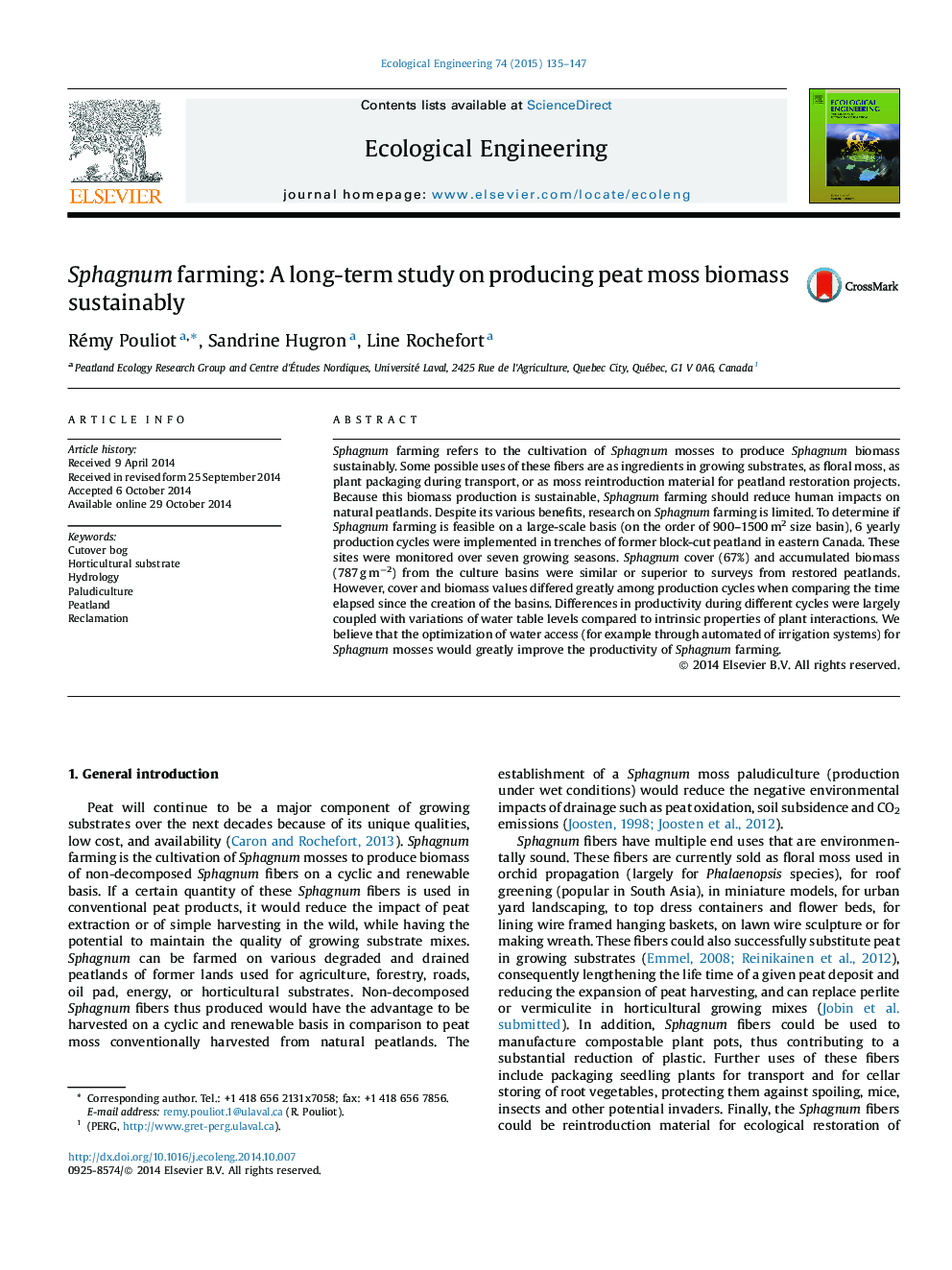| Article ID | Journal | Published Year | Pages | File Type |
|---|---|---|---|---|
| 4389303 | Ecological Engineering | 2015 | 13 Pages |
Abstract
Sphagnum farming refers to the cultivation of Sphagnum mosses to produce Sphagnum biomass sustainably. Some possible uses of these fibers are as ingredients in growing substrates, as floral moss, as plant packaging during transport, or as moss reintroduction material for peatland restoration projects. Because this biomass production is sustainable, Sphagnum farming should reduce human impacts on natural peatlands. Despite its various benefits, research on Sphagnum farming is limited. To determine if Sphagnum farming is feasible on a large-scale basis (on the order of 900-1500 m2 size basin), 6 yearly production cycles were implemented in trenches of former block-cut peatland in eastern Canada. These sites were monitored over seven growing seasons. Sphagnum cover (67%) and accumulated biomass (787 g mâ2) from the culture basins were similar or superior to surveys from restored peatlands. However, cover and biomass values differed greatly among production cycles when comparing the time elapsed since the creation of the basins. Differences in productivity during different cycles were largely coupled with variations of water table levels compared to intrinsic properties of plant interactions. We believe that the optimization of water access (for example through automated of irrigation systems) for Sphagnum mosses would greatly improve the productivity of Sphagnum farming.
Related Topics
Life Sciences
Agricultural and Biological Sciences
Ecology, Evolution, Behavior and Systematics
Authors
Rémy Pouliot, Sandrine Hugron, Line Rochefort,
